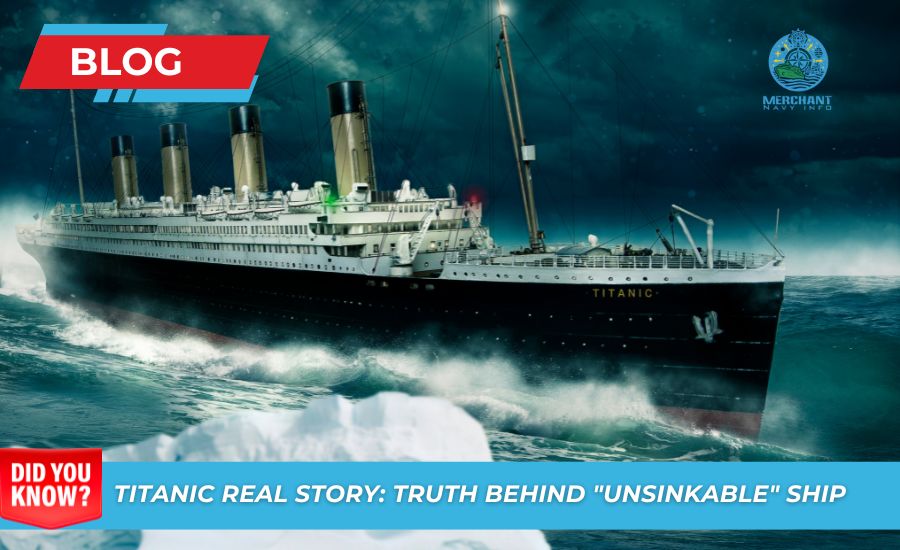
Titanic Real Story: Truth Behind “Unsinkable” Ship
Before the Titanic was launched on April 10, 1912, excitement was in the air. The new ship was the largest artificial moving object in the world. It had many innovative features, including compartments that could be locked remotely, which made it considered “unsinkable.”
On Titanic’s maiden voyage, more than 2,000 passengers and crew boarded the Titanic from Southampton, England, to New York. However, for most of them, it was their last trip.
When was Titanic built?
Titanic was built by White Star Line, a competitor of another shipbuilder, Cunard. In 1906, Cunard Line built the Lusitania and Mauretania, which set speed records across the Atlantic and caused a sensation. To compete, the White Star Line decided to build several larger ships known for comfort rather than speed: the Olympic, Titanic, and Britannic, according to the Molly Brown House Museum.
According to the National Archives, the Titanic was completed in Belfast on March 31, 1912, for $1.5 million (about $47 million today). The ship took over two years to build and was 883 feet (270 meters) long, the equivalent of four city blocks, and more than 92 feet (28 meters) tall. According to the Royal Museums Greenwich, it weighed 46,500 tons (42,000 metric tons).
Also Read: Top 15 Types Of Ships You Should Know
Titanic under construction at Harland & Wolff
According to the Titanic Museum in Belfast, the Titanic began her voyage from Southampton, England, then sailed to Cherbourg, France, and Queenstown (now called Cope), Ireland. On April 10, she headed west toward New York. The ship had room for 3,320 passengers and crew, but only 2,240 were on board when it sailed, according to the National Oceanic and Atmospheric Administration (NOAA). The passengers were diverse, including wealthy tourists and working-class immigrants from Germany and Ireland who sought new opportunities in a land that promised the “American Dream.”
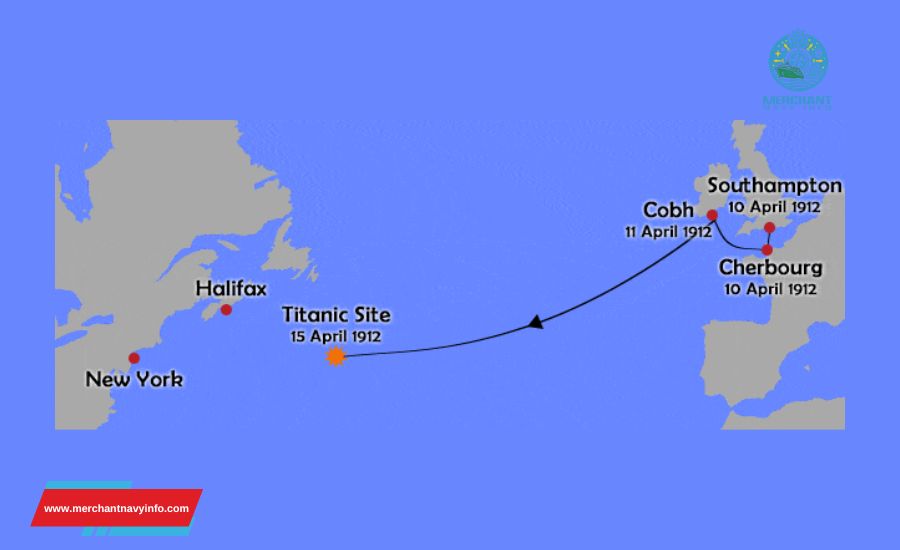
This map shows the Titanic’s route from England to New York and the iceberg path heading south from Greenland.
Titanic’s design prioritized comfort over speed, but did comfort also take precedence over safety? It carried some of the world’s wealthiest people at the time and was a giant leap forward in luxury travel. Conditions in second class were similar to first class on other cruise ships, and Titanic’s passengers were equipped with a gymnasium, swimming pool, library, and large dining room.
The ship had problems from the beginning, with accidents and near misses. While the deaths of those on board when the Titanic sank are well documented, the first victims were some of the ship’s builders. The massive ship took about 3,000 workers and over two years to build. During construction, eight workers died before the ship even touched the water, according to the National Geographic Society.
On April 14, 1912, at 11 p.m., a nearby ship, the Californian, sent a message. The ship sank on the evening of April 14 and the morning of April 15, 1912, just four days after departure.
Also Read: What Are 7 Types Of Cargo Ships?
According to Frederick Fleet’s testimony at the British Shipwreck Commissioner’s Inquiry into the sinking of the Titanic, at about 11:40 p.m. on April 14, the first person to spot the iceberg deathtrap shouted, “Iceberg, ahead!”
As one of the lookouts, Fleet watched with Reginald Lee as the Titanic struck the iceberg. Spotting the danger in the water that night was more difficult than usual because the sea was unusually calm. It reduced the ability to spot objects in the water because no threatening waves crashed against the iceberg.
To avoid the rapidly approaching iceberg, the ship suddenly turned left and collided with it. The ice formed a hole along the ship’s starboard side for approximately 300 feet (90 m) and began to fill with water.
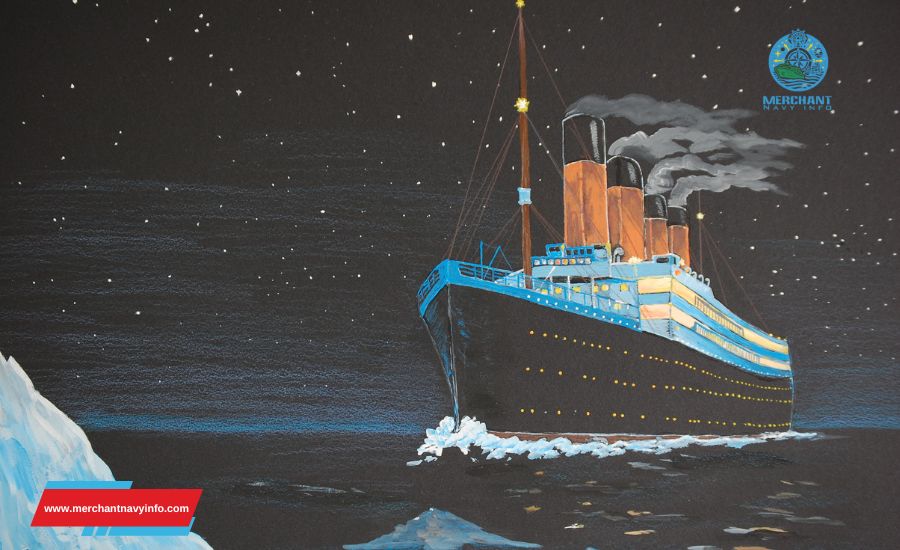
Two hours and forty minutes after hitting the iceberg, the ship broke apart beneath the surface of the Atlantic Ocean.
Why did the Titanic sink?
After the iceberg struck, six of the ship’s 16 watertight compartments began to fill with water. Also, this was enough for the ship to begin to sink, at which point the water overflowed the tops of these compartments (“cross bulkheads”) and began to fill other compartments. According to Encyclopedia Britannica, recent estimates suggest that the ship may have washed ashore with only four damaged compartments.
However, with six compartments leaking, the Titanic’s fate was sealed: It had lost so much buoyancy that it could not have stayed afloat, no matter how well it had been built.
Yet the Titanic sank in nearly three hours; Titanic expert Parks Stevenson said that when the ship’s engineers learned that six compartments were leaking, he expected them to stay afloat for only an hour to an hour and a half.
In 1998, scientists at the National Institute of Standards and Technology (NIST) also discovered that the helmet consisted of thin sheets rather than one large piece as originally believed.
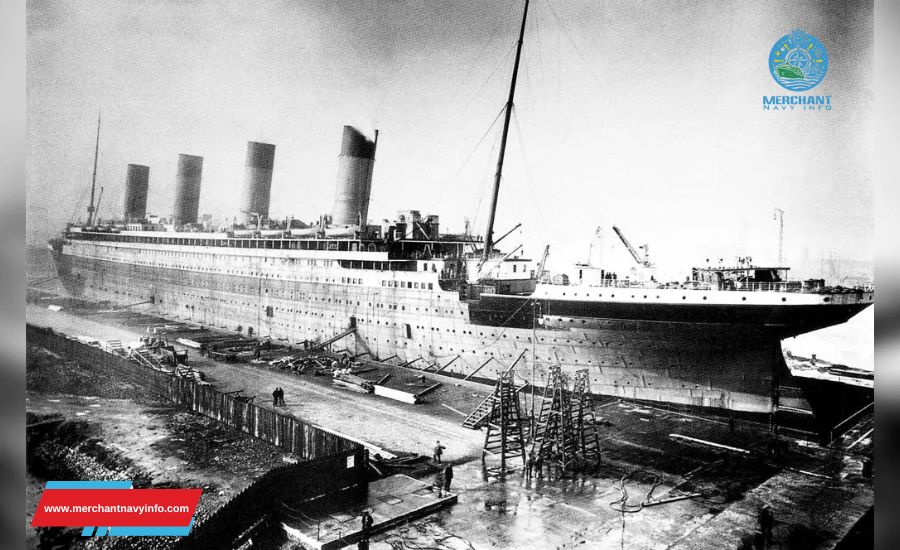
According to the National Institute of Standards and Technology, the poor quality of the iron used in the rivets holding the hull together, which contained three times the amount of slag (glass residue formed during the casting process), may have contributed to the Titanic’s rapid sinking. In cold temperatures, slag becomes more brittle, which may have caused the rivet heads to break when they hit the iceberg.
The back rose as the front of the ship filled with water and sank into the sea. It put tremendous pressure on the middle of the ship. Eventually, it broke, and the bow plunged into the sea. The ship sank at 2:20 a.m. on April 15.
Also read: What Are Line Throwing Apparatus On Ships?
How deep was the Titanic?
According to the National Oceanic and Atmospheric Administration (NOAA), the wreck lies about 3,800 meters (12,467 feet) below the seabed at a pressure of about 380 atmospheres.

Titanic Passengers and Survivors
According to the Institution of Mechanical Engineers, the ship carried 16 lifeboats, plus four “collapsible” lifeboats, which together would have only been able to accommodate one-third of Titanic’s total passengers if the ship had been fully loaded. As it was, the ship could only hold half of the passengers.
Although it seems inexcusable by today’s standards, the Titanic carried more lifeboats than the law required. After the sinking, governments enacted laws to prevent such incidents from happening again and required ships to carry more lifeboats, according to the International Maritime Organization.
All of Titanic’s survivors were picked up by the Carpathia, which received Titanic’s distress signal and immediately set sail for Titanic. However, according to the Encyclopedia Titanic, it did not arrive until four in the morning.
Some of Titanic’s passengers were important figures, including John Jacob Astor IV, one of the richest men in the world at the time. So did Macy’s co-owners Ida Strauss and Isidor Strauss. And, of course, there was “unsinkable” Molly Brown, a socialite who became famous for urging the lifeboats to return for survivors and ultimately survived the ordeal.
Astor did not survive. She did not take in reports of the ship’s severe sinking and was later barred from boarding a lifeboat because of a “women and children first” policy. (But his pregnant wife survived.)
A study published in 2012 by Uppsala University in Sweden showed that of all those rescued from the disaster, 70 percent were women and children, and only 20 percent were men. Ida Strauss initially boarded a lifeboat but returned to her husband and told him, according to the U.K. National Archives: “Where you go, I’ll go.” The couple died together (he was 67, she was 63).
Also Read: Why is it Called the Poop Deck?
When was the Titanic discovered?
According to the Woods Hole Oceanographic Institution (WHOI), the wreck of the Titanic was discovered on September 1, 1985. In a joint mission between WHOI and the French National Institute for Oceanography (IFREMER), a search team led by Robert Ballard of WHOI and Jean-Louis Michel of IFREMER narrowed the site of the wreck to an area of 100 square miles (259 square kilometers) in the middle of the Atlantic Ocean. Using the sonar capabilities of two underwater vehicles, Argo and SAR, the team traced a path from the wreck directly to the hull.
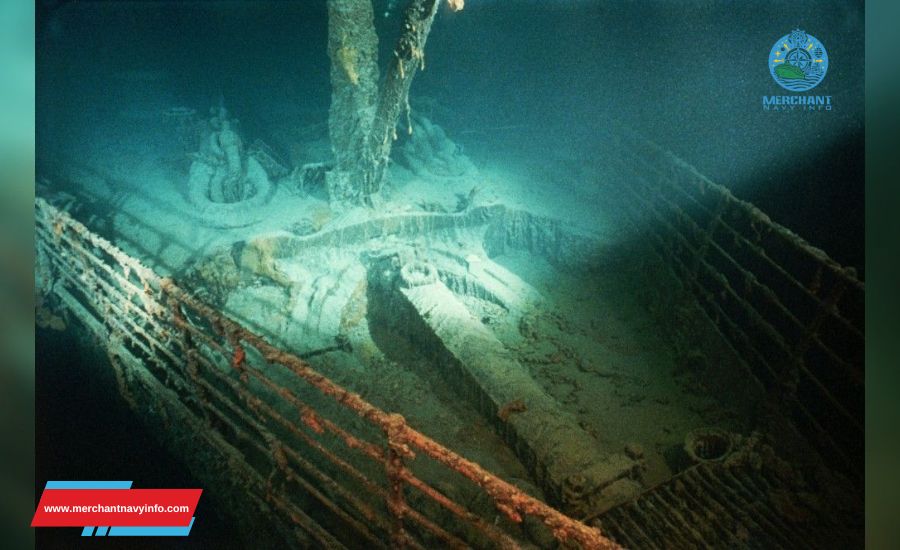
According to National Geographic, Ballard and his teammates were initially on a secret mission in the Atlantic Ocean to help the U.S. Navy search for two sunken nuclear submarines, the U.S.S. Thresher and the U.S.Scorpio. But the crew found the submarine sooner than expected and spent 12 days searching for Ballard’s long-term target, the Titanic.
In May 2023, scientists completed the first large-scale digital survey of the Titanic’s wreckage, and in June 2023, the submarine driving near the Titanic’s wreckage disappeared.









